Exploring the Universe’s Secrets: A Bold Vision for Cosmic Connections and Self-Organization
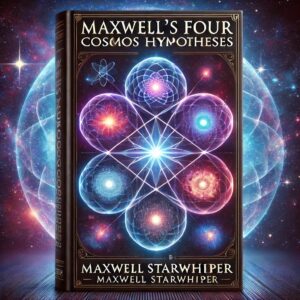
Reimagining the Universe with New Eyes: A Framework for Understanding Cosmic Mysteries
Maxwell Starwhisper’s Four Cosmos Hypotheses brings a refreshing perspective to how the universe works. The book dives into big ideas about how everything from tiny particles to massive galaxies might be connected and self-organizing. What sets this work apart is its ability to explain some of the James Webb Space Telescope’s (JWST) most baffling discoveries, like planets without stars and groups of planets forming without stars nearby.
Starwhisper introduces four key ideas that help us make sense of these mysteries: Quantum Coupling, the Layered Universe Model, Cosmic Self-Organization, and the Cosmic Crystal Hypothesis. These concepts aren’t just about understanding the universe; they could change how we think about technology and life itself.
Breaking Down the Four Hypotheses with Simple Analogies
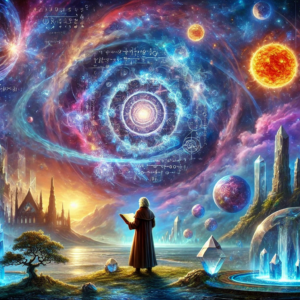
1. Quantum Coupling: Invisible Threads Linking the Universe
Imagine two friends holding a tightrope between them, even if they’re miles apart. Starwhisper’s Quantum Coupling suggests that particles in the universe behave like that—they’re connected by invisible “threads,” no matter how far apart they are. But here’s the twist: these threads could also connect big things like planets or galaxies.
This idea might explain JWST’s discovery of planets floating alone without stars nearby. Normally, planets form around stars, but these “orphan planets” could be held in place by these quantum threads, linking them to unseen forces in the universe. If proven, this concept could also lead to technologies like instant communication across galaxies, using these invisible connections.
2. Layered Universe Model: The Cosmic “Layer Cake”
Think of the universe as a giant layer cake. Each layer has its own ingredients—tiny particles on the bottom, stars in the middle, and galaxies on top. The layers work together to keep the cake standing tall.
Starwhisper’s Layered Universe Model explains how different parts of the universe interact to maintain balance. The JWST’s findings of starless groups of planets might be explained by this model: planets could form as part of a hidden layer of the cosmic cake, not needing stars at all. This suggests that some parts of the universe might operate in ways we haven’t yet fully understood.
3. Cosmic Self-Organization: The Universe as a Team Player
Have you ever seen birds flying together in a perfect V-shape? They don’t have a leader giving orders; they instinctively know how to organize themselves. Starwhisper believes the universe does the same thing. Galaxies, planets, and even dark matter naturally find ways to organize themselves into patterns without needing an outside force to control them.
This could explain why JWST is finding planetary groups forming without stars. These groups might not need the gravitational pull of a star because they are self-organizing, like those birds in flight. This idea has real-world applications, too—it could inspire self-managing energy grids or adaptive city planning where systems regulate themselves without constant human input.
4. Cosmic Crystal Hypothesis: Nature’s Blueprint for the Universe
Imagine a snowflake. Every snowflake grows with a unique, beautiful symmetry, even though no one is designing it. Starwhisper’s Cosmic Crystal Hypothesis says the universe grows in a similar way, forming repeating patterns that extend across galaxies.
This could explain why JWST is seeing unexpected symmetry in how planets and stars are distributed. These patterns might be the universe’s natural way of building itself, just like a crystal grows. This concept might even inspire new materials for technology, copying the universe’s ability to create strong, lightweight, and efficient structures.
The James Webb Telescope’s Discoveries and Maxwell’s Insights
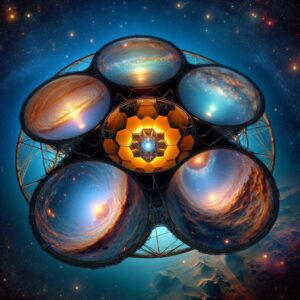
The James Webb Space Telescope has captured phenomena that challenge traditional science, such as planets drifting alone and starless groups of planets. These discoveries might seem like cosmic puzzles, but Starwhisper’s ideas provide a way to piece them together:
- Quantum Coupling explains how planets might remain stable without a star’s gravity, thanks to invisible quantum threads connecting them.
- Cosmic Self-Organization suggests these planets could naturally form patterns without external forces.
- The Cosmic Crystal Hypothesis gives a reason for the symmetrical arrangements JWST has observed in distant galaxies.
These ideas don’t just explain what the telescope is finding—they also hint at how the universe might operate as one interconnected system, balanced and organized from the smallest particle to the largest galaxy.
How These Ideas Could Shape Our Future
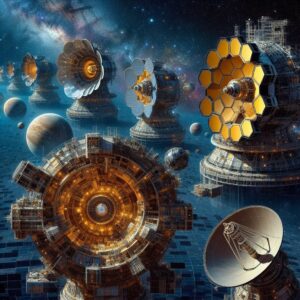
Starwhisper’s hypotheses aren’t just about solving cosmic mysteries. They could lead to real-world breakthroughs that transform life on Earth:
- Instant Quantum Communication
Imagine sending a message across the galaxy in real-time. Quantum Coupling could make this possible, creating communication networks that are faster and more secure than anything we have today. - Self-Regulating Energy Systems
Inspired by Cosmic Self-Organization, future energy grids could automatically adapt to changing needs, just like galaxies organize themselves. - New Materials for Exploration
Using the principles of the Cosmic Crystal Hypothesis, we could develop lightweight, strong materials for building spacecraft or even cities. - Finding New Habitable Worlds
By understanding how starless planets form and stay stable, we might find habitable planets in unexpected places—worlds that don’t rely on stars for warmth and light.
The Eighth Theory of Cosmic Understanding
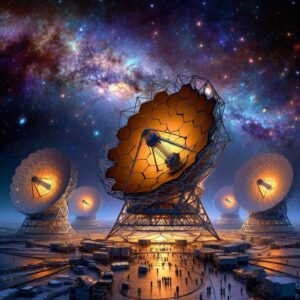
For centuries, scientists have worked to unify our understanding of the universe. From Newton’s laws of motion to Einstein’s theory of relativity, each discovery has added a piece to the puzzle. Maxwell Starwhisper’s work could be the next big step—a framework that connects quantum physics with the behavior of galaxies and beyond. These hypotheses offer a new way to think about everything we see through the lens of the James Webb Telescope and beyond.
Conclusion
Four Cosmos Hypotheses is a thought-provoking book that simplifies the universe’s complexity while offering revolutionary insights. Maxwell Starwhisper has created a framework that not only explains some of the James Webb Telescope’s latest discoveries but also opens doors to a future of technological breakthroughs. Whether you’re a scientist or just curious about the universe, this book invites you to see the cosmos in a new light—organized, interconnected, and endlessly fascinating.
References
- Aspect, Alain, Philippe Grangier, and Gérard Roger. “Experimental Tests of Realistic Local Theories via Bell’s Theorem.” Physical Review Letters 49, no. 2 (1982): 91-94.
- Blumenthal, George R., et al. “Formation of Galaxies and Large-Scale Structure with Cold Dark Matter.” Nature 311, no. 5986 (1984): 517–525.
- Jeans, James H. “The Stability of a Spherical Nebula.” Philosophical Transactions of the Royal Society of London 199 (1902): 1–53.
- Rubin, Vera C., et al. “Extended Rotation Curves of High-Luminosity Spiral Galaxies.” The Astrophysical Journal 225 (1978): L107.
- Riess, Adam G., et al. “Type Ia Supernova Distances to Galaxy Clusters: Evidence for Dark Energy.” The Astrophysical Journal 853, no. 2 (2018): 126.
good idea